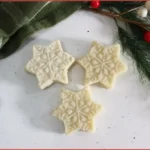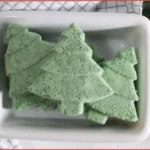Getting started with aromatherapy can feel overwhelming, especially with the vast array of essential oil accessories out there. Don’t let that stop you, though. The truth is, you don’t need them all when you’re just starting.
The right essential oil accessories make your aromatherapy experience simple, enjoyable, and safe. From chic diffusers that fill your space with beautiful scents and easy-to-fill roller bottles to simple tools that help you blend, dilute, or store your oils, these tools take the guesswork out of getting started.
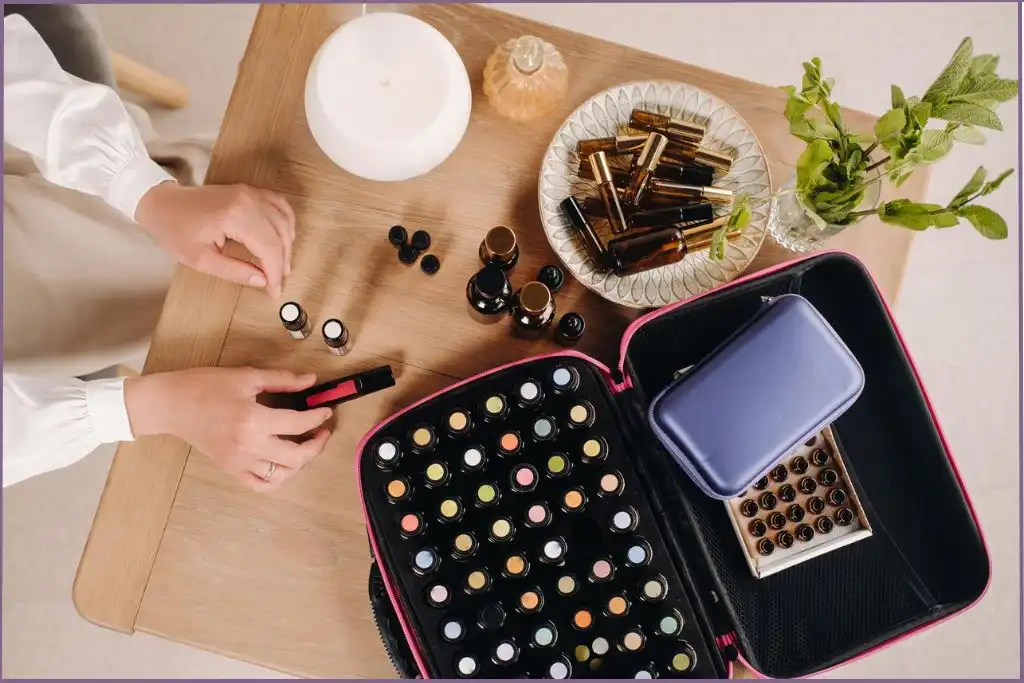
✨ Get 12 Free Holiday Diffuser Blends — Printable PDF
Instantly make your home smell like Christmas with these festive, ready-to-use recipes.
As you look through this list of essential oil accessories, you’ll discover options that suit any lifestyle, budget, or personal preference, so you can make the most of your aromatherapy journey.
These accessories also help you get the most out of every essential oil drop, especially if you’re planning to explore DIY recipes, custom blends, or everyday aromatherapy rituals.
Table of Contents
Affiliate Disclosure: Some links on this site are affiliate links. I may earn a small commission if you purchase through them, at no extra cost to you. See the full affiliate disclosure.
Just Getting Started with Essential Oils?
Before you explore the essential oil accessories that make aromatherapy easier, it’s helpful to start with a few essential oils you enjoy.
If you’re still figuring out which ones to begin with or how to use them, you’ll find lots of helpful tips and advice in this beginner’s guide on simple steps to start your aromatherapy journey.
1. Essential Oil Diffusers
Using a diffuser is one of the simplest and most effective ways to enjoy the aromatic benefits of essential oils. Diffusers help spread the scent of your oils into the air, filling your space with calming or energizing aromas.
A good diffuser makes it easy to incorporate aromatherapy into your daily routine, whether you want to create a relaxing environment, uplift your mood, or refresh the air.
Here’s a breakdown of the most common types of diffusers and what makes each one unique:
Ultrasonic Diffusers
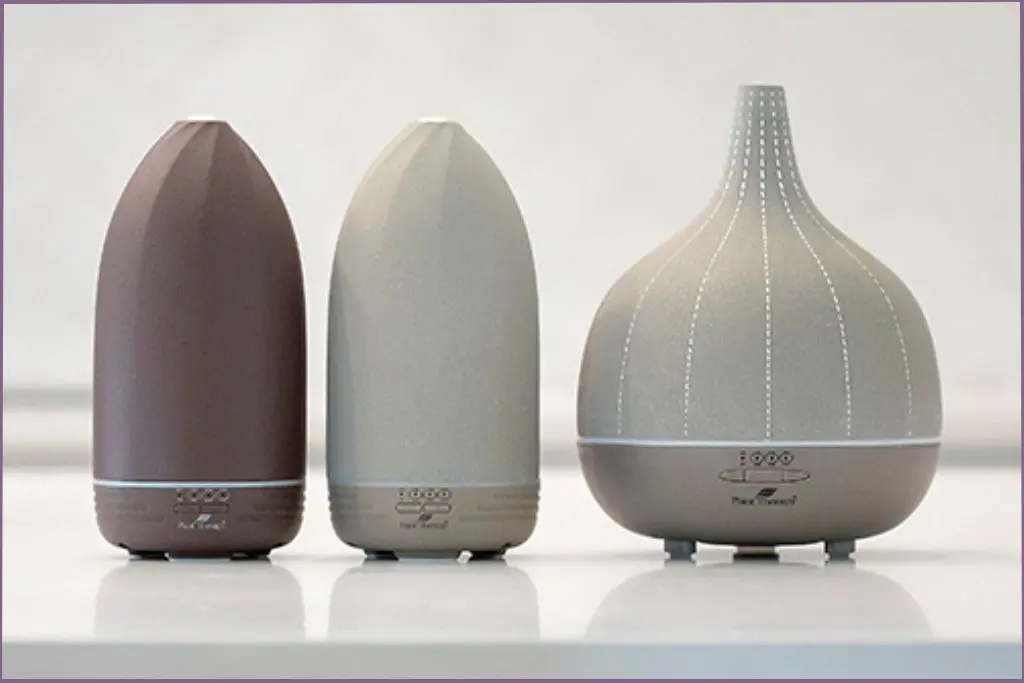
Ultrasonic diffusers use water and ultrasonic vibrations to disperse a cool, scented mist into the air. These are the most popular choices for beginners. They are easy to use, emit a mild aroma, and are budget-friendly.
Ultrasonic diffusers require only a few drops of oil per use. They operate quietly, making them ideal for use during relaxing moments and spa sessions.
Because they emit water vapor, these devices double as mini-humidifiers. While this is great in dry climates, it may not be suitable in very humid climates.
Best for: Everyday use in bedrooms, living areas, or workspaces.
Nebulizing Diffusers

Nebulizers use pressurized air to break essential oils into a fine mist of pure aroma. These types of diffusers deliver a stronger, more concentrated scent as they use pure essential oil, no water or heat.
Nebulizing diffusers use more oil per session and can be a bit louder than ultrasonic devices.
Best for: Larger rooms or people who prefer a more intense aroma and quick, powerful scent distribution.
Passive Diffusers

Passive diffusers rely on natural air flow to disperse scent slowly and steadily. Examples include reed diffusers, clay stones, wood blocks, or aromatherapy jewelry.
These types of diffusers are simple to use and offer a softer scent experience. They don’t use electricity or water. However, you do not have control over the scent dispersion with passive diffusers.
Passive diffusers work best with lighter essential oils or blends.
Best for: Subtle, background fragrance in small areas like closets, bathrooms, or desks.
Heat Diffusers

Heat diffusers use gentle heat to evaporate essential oils into the air.
While simple, easy to use, and often budget-friendly, they are not as effective at dispersing scent in larger rooms. Also, heat may alter the chemical structure of some oils.
Best for: Small spaces, occasional use, or people who prefer a subtle scent.
Car diffusers

Car essential oil diffusers are designed to make aromatherapy part of your daily commute. These devices come in a variety of styles, from vent clips and pad-based diffusers to mini waterless options powered by your car’s USB port.
Car diffusers are compact, easy to use, and offer a great way to boost your mood and alertness while driving. It’s best to avoid using sleep-inducing aromas such as lavender and Roman chamomile in your car diffuser.
Best for: Daily drives, road trips, or creating a calm or focused mood in the car.
Portable Diffusers

Portable diffusers are small, travel-friendly units that let you enjoy essential oils wherever you go. They are lightweight and convenient, and don’t need a power outlet.
Portable devices can be battery-powered, USB rechargeable, or even wearable and are ideal for getting the benefits of aromatherapy anywhere.
Best for: Travel, work desks, hotel rooms, or keeping in your bag for on-the-go use.
This guide to buying an essential oil diffuser offers useful tips on how to choose the best type of diffuser for you.
2. Carrier Oils
One of the most important things to know is that essential oils should never be applied directly to the skin without dilution.
Essential oils are highly concentrated plant extracts. While that potency is what gives them their beautiful scent and benefits, it can also irritate your skin if not used properly. That’s where carrier oils come in.
Carrier oils are mild, plant-based oils that help “carry” essential oils safely onto your skin. Unlike essential oils, they are not volatile (meaning they don’t evaporate quickly), and they have little to no aroma of their own. This makes them the perfect base for blending.
Difference Between Carrier Oils and Essential Oils
Essential oils are the active ingredients, highly aromatic and potent. They are extracted from flowers, leaves, bark, or roots and are highly concentrated.
Carrier oils, on the other hand, are the gentle, nourishing base that allows you to use them safely on your skin. They are cold-pressed from nuts, seeds, or fruit and are rich in skin-loving nutrients like vitamins and fatty acids.
Read a more detailed write-up on the difference between carrier oils and essential oils.
Why Use Carrier Oils?
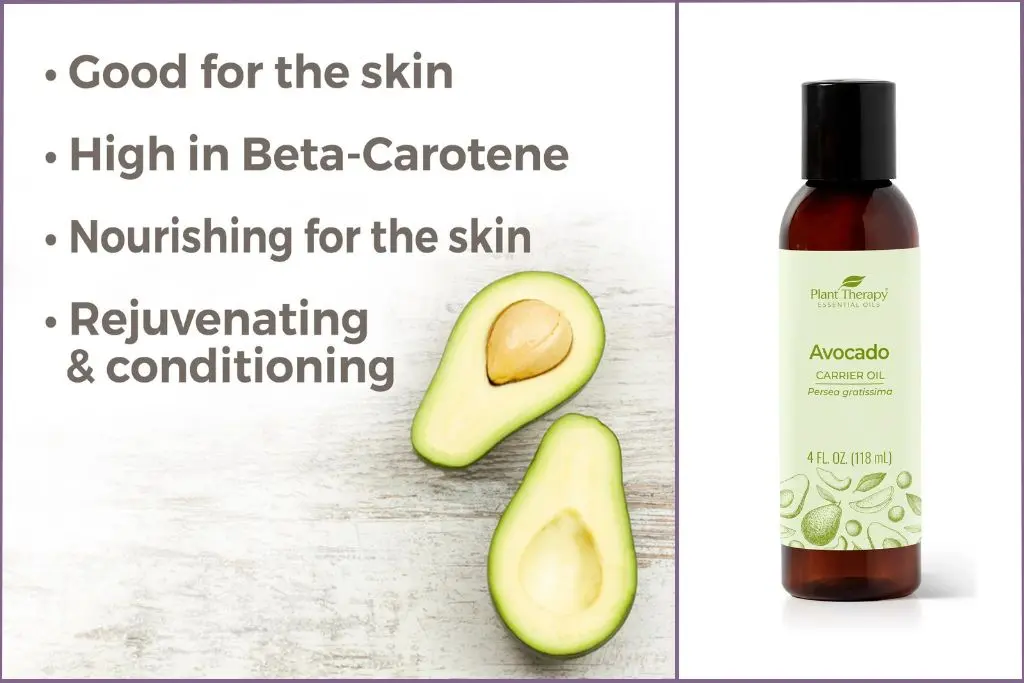
To Prevent Skin Irritation: Carrier oils dilute essential oils to a skin-safe level, reducing the risk of irritation while still allowing you to experience the scent and benefits of the oil.
To Help Essential Oils Spread More Evenly: Carrier oils give the blend body, allowing you to apply it over a larger area without the oil evaporating too quickly. This makes them ideal for massages, roller blends, or any DIY product where you want the scent to linger and the oil to absorb gently.
To Add Moisturizing Benefits: Many carrier oils also have their own skin benefits. For example, jojoba oil closely resembles your skin’s natural sebum and absorbs quickly, while sweet almond oil is rich in vitamins A and E, making it a great option for dry or sensitive skin.
Common Carrier Oils to Start With
Jojoba Oil – Lightweight and non-greasy, great for most skin types
Sweet Almond Oil – Soothing and softening, ideal for dry or sensitive skin
Fractionated Coconut Oil – Liquid at room temperature, odorless, and long-lasting
Grapeseed Oil – Light and fast-absorbing, ideal for oily or combination skin
You don’t need to stock up on all of them – just choose one or two that suit your skin type or preferred texture. Keep in mind that if you have nut allergies, you’ll want to avoid oils like almond or argan.
3. Roller Bottles or Roll-Ons
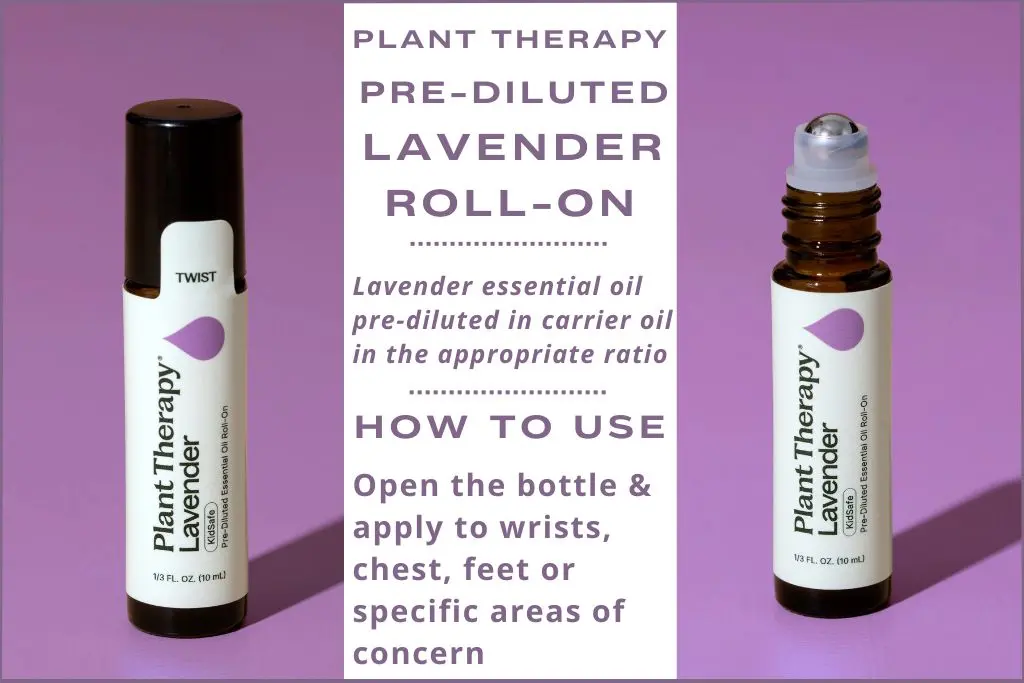
Roller bottles are a popular way to enjoy oils on the go. These small glass bottles (usually 10ml) have a smooth rollerball top.
The bottle is filled with essential oil diluted in carrier oil, so it’s ready for topical application. The rollerball makes it easy to swipe the pre-diluted essential oil or blend directly onto your skin with a gentle rolling motion.
It’s a spill-proof, mess-free, precise way to use essential oils topically. They are great for creating custom synergy blends to apply at specific pulse points.
Roller bottles are one of the most convenient tools to have when starting with essential oils, especially if you’re interested in using them for personal self-care throughout the day.
What Are Roller Bottles Used For?

They’re most commonly used to apply oils to pulse points—like the wrists, temples, back of the neck, or soles of the feet. These are areas where your blood vessels are closer to the skin, allowing the aroma and benefits of the oil to come through more quickly.
You can create a roller bottle for just about anything—calming blends to help you wind down, energizing blends to perk you up, or even blends for focus or mood during the day. Because they’re pre-diluted with a carrier oil, you don’t need to worry about mixing each time you apply. Just shake and roll.
What to Look For When Buying Roller Bottles
Glass bottles are a must; essential oils can break down plastic over time. Amber or cobalt blue bottles are best because they protect the oils from sunlight.
A stainless steel roller ball glides more smoothly and lasts longer than plastic ones
If you plan to carry your blend with you, look for bottles with tight-fitting caps to avoid leaks.
4. Dark-Colored Glass Spray Bottles

As you start exploring ways to use essential oils beyond diffusing and topical application, you’ll quickly discover how useful glass spray bottles can be. These simple, reusable containers make it easy to create your own DIY room sprays, pillow mists, facial toners, linen sprays, and even natural cleaning products.
Why Use Glass Spray Bottles?
Dark-colored glass and spray nozzle are both important aspects of these essential oil accessories.
It’s advisable to use glass bottles because glass does not interact with the contents inside. Essential oils are potent and can interact with certain materials, especially plastic. Over time, the oils may degrade plastic bottles, which not only damages the container but can also affect the quality of your blend.
Amber or cobalt blue bottles are recommended as they protect the oils from light exposure and oxidation, two elements that can degrade the oil prematurely.
Spray bottles make it convenient and easy to apply your essential oil blends to surfaces or into the air without directly touching the oils. Whether you’re spritzing your pillow with a calming lavender mist before bed or refreshing a room with a citrus blend, the spray format is a safe and efficient way to use oils in your daily routine.
What to Look For
- Size: 2 oz or 4 oz bottles are ideal for most DIY recipes
- Dark-colored glass: Amber and blue bottles help preserve the oils
- Fine mist sprayer: A quality nozzle makes a big difference in application
Easy Beginner Uses
Room Spray: A few drops of essential oil + distilled water + a splash of witch hazel or vodka (to help the oil disperse)
Linen Spray: Lavender and chamomile in water to lightly scent bed linens
Natural Cleaner: Lemon, tea tree, and peppermint in a vinegar-water base for freshening surfaces
Spray bottles are especially helpful if you like experimenting with blends and want a quick way to refresh your space or fabric items. They’re easy to use, affordable, and reusable, making them a must-have tool for anyone starting out with essential oils.
5. Spray Bottles with Fine Mist
While we covered glass spray bottles earlier, it’s worth mentioning that the quality of the sprayer nozzle matters a lot. A fine mist spray disperses the oils evenly and gently, making your room sprays or linen mists more effective and pleasant to use. If you notice your spray is too heavy or uneven, consider upgrading to a bottle with a better misting mechanism.
6. Pipettes and Glass Droppers
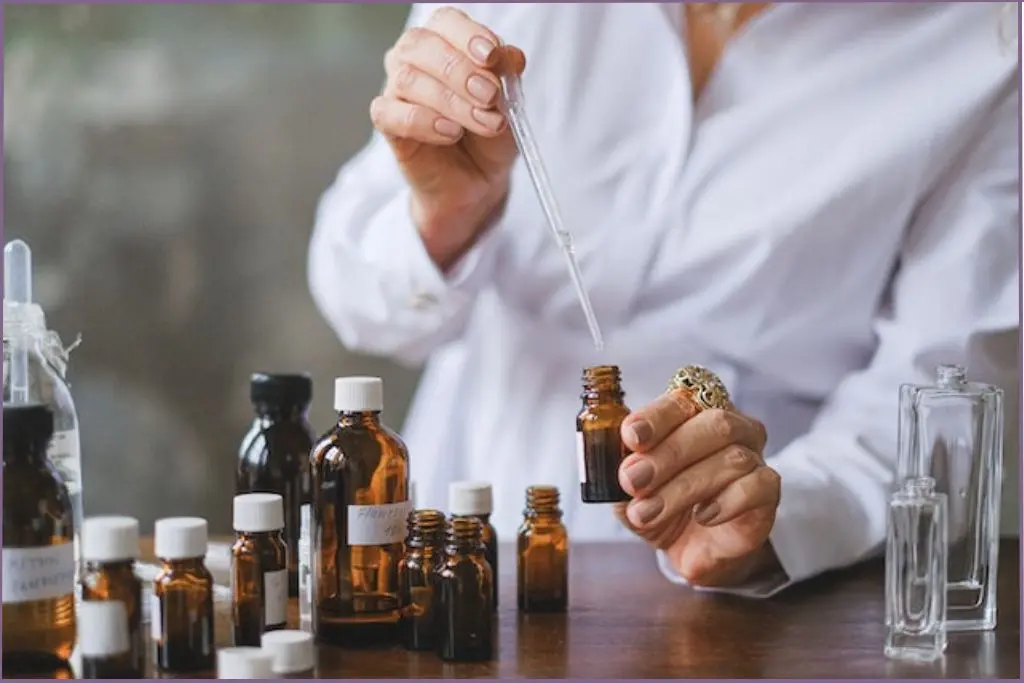
When you’re working with essential oils, especially in small amounts, accuracy matters.
Many essential oil bottles come with built-in orifice reducers that allow the oil to drip out one drop at a time, but depending on the thickness of the oil or the angle of the bottle, this can be a bit unpredictable.
That’s where pipettes and glass droppers come in handy.
Pipettes are disposable plastic tools that let you draw up and dispense liquids in small, controlled amounts. They’re especially useful when blending oils and need to use a precise number of drops. They also keep things sanitary by preventing cross-contamination.
Glass droppers are reusable versions, typically attached to a screw-on cap that fits directly onto your essential oil or carrier oil bottle.
Both are extremely helpful for beginners who want to start mixing their own blends or trying DIY projects like roller bottles, bath oils, and sprays.
Why They Matter for Beginners
- Precise measuring: Essential oil recipes often call for just 1–5 drops of oil. Too much can make a blend overpowering or even unsafe for skin application. Pipettes and droppers give you better control.
- Cleaner blending: Instead of tilting and shaking your essential oil bottle, you can simply draw the oil up and dispense exactly what you need, with less mess.
- Ideal for small batches: Whether you’re creating a roller blend, perfume, or skincare product, pipettes and droppers help you achieve the precise proportions, especially when working with limited ingredients.
When to Use Pippettes & Glass Droppers
Use pipettes when you’re experimenting or working with different oils in quick succession. They’re cheap and disposable, so you can use one per oil and avoid cross-contamination.
Use glass droppers for oils or blends you use regularly. They’re perfect for carrier oils or custom blends you’ve already mixed and stored in dropper-top bottles.
These tools may seem simple, but they can make your blending process feel smoother and more enjoyable—plus, they help you feel more confident as you start working with essential oils.
7. Labeling Supplies
As you start building your essential oil collection and experimenting with DIY blends, you’ll quickly realize how easy it is to lose track of what’s in each bottle. That’s where labeling supplies come in, not just for organization, but for safety, too.
Why Labeling Is Essential
Once you’ve made a roller blend, room spray, or diluted oil, it often looks identical to others you’ve created. Without a label, you won’t remember which oils you used, what the blend was intended for, or when you made it.
Clear, legible labels help you:
- Identify blends at a glance
- Track ingredients and dilution ratios
- Stay consistent when re-creating favorite recipes
- Avoid using the wrong blend accidentally
This is especially important if you’re sharing oils with family members or storing DIY blends for future use.
What You’ll Need
Waterproof or oil-resistant labels: Essential oils can smudge ink and peel paper, so it’s worth investing in labels made for oily surfaces. You can also cover regular labels with clear tape as a budget-friendly fix.
A fine-tip permanent marker or label printer: Handwriting is fine for small batches, but if you love organizing, a label printer can be a game-changer.
Optional: Color coding or stickers: Some people like to use colored dots or washi tape to group blends by purpose—like calming, energizing, or seasonal.
Make it a habit to label your blends immediately after making them, even if you think you’ll remember what’s inside. A simple label with the name, date, and key ingredients is often enough—but feel free to get creative if that brings you joy!
Bonus Essential Oil Accessories to Consider
As you grow more comfortable with essential oils, a few additional accessories can help keep your collection organized and your blends easy to use.
7. Storage Boxes and Organizers

Keeping your essential oils and tools neatly stored is key to protecting their quality and extending their shelf life.
A sturdy storage box or organizer with compartments helps prevent bottles from tipping over and keeps everything in one place. Look for options that protect from light and heat, as essential oils are sensitive to both.
An organized collection also makes it easier to find your favorite oils quickly, especially when you start building a larger collection.
9. Essential Oil Journal

Keeping a dedicated essential oil journal is a wonderful way to track your blends, note your favorite recipes, and record how different oils make you feel. For beginners, especially, this can be invaluable in learning what works best for you and avoiding repeat mistakes.
You can jot down the oils used, dilution ratios, dates made, and even sensory impressions—helping you build a personalized aromatherapy practice over time.
Where to Buy Beginner Accessories
When you’re just starting out with essential oils, it can be overwhelming to figure out where to buy the tools and accessories you need. The good news is—you don’t need everything at once. Begin with the basics and build your kit gradually as you explore what works best for your lifestyle.
Here are some trusted sources where you can find high-quality, beginner-friendly essentials to get started with confidence.
Essential Oils, Carrier Oils, Diffusers & Pre-Diluted Roll-Ons
Plant Therapy is a fantastic option for all your foundational needs, including essential oils, carrier oils, diffusers, and even pre-diluted roll-ons. They offer an excellent balance of quality and value, making them a smart choice for beginners.
Their essential oils are tested for purity, clearly labeled, and easy to use.
You’ll find USDA-certified organic oils, affordable starter kits, and a wide variety of single oils and blends.
Their pre-diluted roll-ons are perfect if you want to experience topical aromatherapy without having to mix your own blends.
Tip: Plant Therapy often runs sales and bundle offers. Read my detailed Plant Therapy essential oils review to know why they are my #1 recommended brand.
If you purchase through my affiliate link, I may earn a small commission at no extra cost to you. It helps support this site and allows me to keep sharing free, beginner-friendly resources—thank you!
Glass Bottles, Pipettes, and Blending Tools
For supplies like roller bottles, spray bottles, pipettes, stirrers, and droppers, you can’t go wrong with Starwest Botanicals. They carry a wide range of high-quality tools used by herbalists and DIY enthusiasts alike.
• Excellent for bulk buys or restocking
• A go-to for natural lifestyle tools beyond essential oils
• Reputable and trusted for clean, well-made supplies
If you’re only looking for a few basic items or want something delivered quickly, Amazon is a practical alternative. Just be sure to read reviews and check that the products are safe for use with essential oils—look for glass containers and stainless steel roller balls whenever possible.
Starting your essential oil journey doesn’t require a massive investment or a shelf full of tools. You can begin exploring aromatherapy safely and confidently with just a few well-chosen essential oil accessories, such as a diffuser, carrier oil, and a couple of blending basics.
These simple tools help you get the most from your oils, whether you’re creating a calming space at home, making your own blends, or just enjoying the scent of nature in your daily routine.
As you grow more comfortable, you can add to your collection based on how you like to use your oils. Remember, there’s no “right” way to begin—just take it one small, joyful step at a time.
